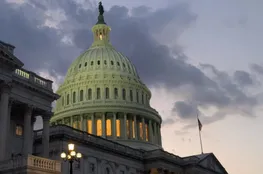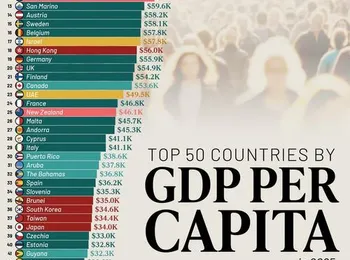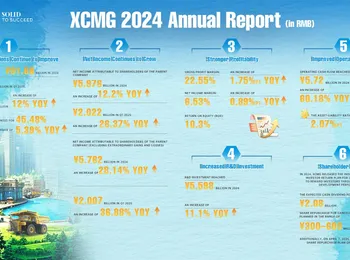Goldman Sachs has issued a stark warning regarding President Donald Trump’s recently enacted spending and tariff plan, asserting that while it marginally reduces the primary deficit, it ultimately propel’s the nation’s debt trajectory onto a significantly steeper path, resembling the borrowing levels observed during the end of World War II. The investment bank’s analysis, detailed in a note to clients, highlights that interest costs alone are projected to surpass $1 trillion annually by next year, a figure that underscores the long-term implications of the current fiscal policy. Goldman Sachs economists, including Manuel Abecasis, David Mericle, and Alec Phillips, emphasized that the bill’s impact extends beyond the immediate reduction in the primary deficit, warning of a sustained upward trend in overall borrowing. They noted that the debt-to-GDP ratio is approaching the post-World War II high, a critical benchmark that signifies a concerning level of national indebtedness. Furthermore, the rise in real interest rates is compounding the problem, dramatically increasing debt and interest expense, pushing borrowing on a much steeper trajectory than anticipated during the previous economic cycle.
Public debt currently stands at approximately 120% of GDP, according to data released by the U.S. Treasury, indicating a substantial and growing financial burden on the nation. The Committee for a Responsible Federal Budget projects that Washington will spend more servicing the debt in 2026 than on either Medicare or the Pentagon – a staggering $1 trillion annually, placing it second only to Social Security. Goldman Sachs’ analysis suggests that this escalating pace of debt servicing could necessitate a historic austerity drive if Congress delays implementing meaningful spending cuts or tax increases. The investment bank’s warning centers on the potential for future lawmakers to face only unpalatable choices, including drastic spending reductions, sweeping tax hikes, or the resort to printing money – a strategy that historically led to devastating hyperinflation in Germany’s Weimar Republic following the First World War.
The current elevated Treasury yields, hovering near 4.4%, reflect investor expectations for continued, higher-for-longer Federal Reserve policy, further amplifying the debt burden. The Congressional Budget Office estimates that the House-passed bill, which extends most 2017 tax cuts, will widen deficits to $2.9 trillion over the next decade. Treasury Secretary Steven Mnuchin has characterized the situation as a ‘spending problem,’ rather than a ‘revenue problem,’ but Goldman Sachs’ team counters that stabilizing the debt would require consistent fiscal surpluses – a level of sustained surplus rarely achieved in economic history.
The potential consequences of inaction are severe, highlighting the urgent need for responsible fiscal management. Failure to address the escalating debt burden risks leaving future generations with a profoundly challenging economic landscape. Goldman Sachs' assessment serves as a critical reminder of the long-term economic ramifications of current fiscal policies and the importance of prioritizing sustainable debt levels. The situation demands immediate attention and decisive action to prevent a potentially catastrophic economic outcome. This analysis underscores the delicate balance between economic growth and fiscal responsibility, a balance that is currently threatened by the trajectory of the nation’s debt.
The complexities of this situation require a nuanced understanding of economic forces and a commitment to prudent financial stewardship. Goldman Sachs’ warning is not merely an investment bank’s assessment; it’s a call to action for policymakers and citizens alike to confront the challenges of a growing national debt. Ultimately, the future economic well-being of the United States hinges on the decisions made today regarding fiscal policy. The continued rise in interest rates coupled with the expansive tax cuts significantly exacerbate the debt issue, demanding immediate and comprehensive solutions.
The potential for hyperinflation, as demonstrated by the Weimar Republic, serves as a stark warning of the dangers of unchecked debt accumulation. Goldman Sachs’ assessment provides a crucial perspective on the long-term implications of this economic situation, urging policymakers to prioritize responsible fiscal management and implement sustainable solutions. The escalating debt levels pose a significant threat to economic stability and future growth, demanding immediate attention and decisive action.
The interplay between interest rates, tax cuts, and government spending creates a volatile economic environment, requiring careful monitoring and proactive measures to prevent a potential crisis. Goldman Sachs' warning is a critical reminder of the interconnectedness of economic factors and the importance of informed decision-making. The future economic health of the United States depends on the choices made today regarding fiscal policy, and the investment bank’s assessment provides a valuable framework for understanding the potential risks and challenges ahead.
The continued rise in interest rates and the expansive tax cuts create a perfect storm, demanding immediate attention and decisive action to prevent a potentially catastrophic economic outcome. Goldman Sachs' warning is a critical reminder of the interconnectedness of economic factors and the importance of informed decision-making. The future economic health of the United States depends on the choices made today regarding fiscal policy.
























